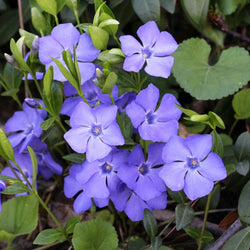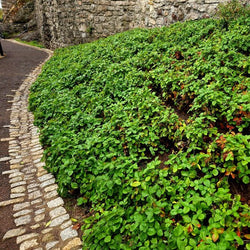You will not be allowed to compare more than 4 products at a time
View comparePlants that can handle Arizona's planting conditions.
🌵 Greenwood Nursery: Your #1 Online Nursery for Arizona Trees & Shrubs...
Bat Garden Plants
Attract Bats to Your Garden: Nature's Best Pest Control! Attracting bats to...
Shade Trees
The best shade trees online make perfect additions to any landscape, old or new. Finding your...
Bog Garden Plants
Bog Garden Plants & Landscaping Tips Creating a bog garden is an...
Border And Lawn Edging Plants
🌿 Define Your Space with Border & Edging Plants from Greenwood Nursery...
Butterfly Garden Plants
Attract Butterflies, Bees, & Hummingbirds with a Vibrant Garden from Greenwood Nursery...
Coastal Garden Plants
Thriving by the Coast: Salt & Heat Tolerant Plants from Greenwood Nursery...
Container Gardening Plants
Plant ideas for container gardening. Check out our article on Container Gardening...
Curb Appeal Plants
Add curb appeal plants to your front yard landscape with garden plants for your home that will add interest to your home landscaping and...
Deer Resistant Plants For Your Garden
Protect Your Garden's Beauty: Shop Deer-Resistant Plants at Greenwood Nursery! Tired of...
Drought Tolerant Plants
GreenwoodNursery.com offers drought tolerant plants. Once established, this selection of plants requires...
Easy To Grow Garden Plants
Whether you are a new gardener, new homeowner or don't have time...
Fairy Gardens Plants
Fairy gardens plants for building your own faerie magical garden. These specially...
Fall Color Plants
Fall color plants are trees, shrubs and perennials that show brilliant colors...
Food Plot Plants
Plants for deer food plots and wild turkey food plots, including a...
Foundation Plants
Here you will find a selection of landscape shrubs and hedge plants...
Fragrant Plants
Plant from our selection of Fragrant Landscape Shrubs around your deck, patio or porch...
Landscaping Trees And Shrubs
Landscaping trees and shrubs are the basis for any landscape design. Plants in this...
Lawn-Free Yards Ideas
Planting ideas for no grass yards. Lawnless yards limit open planted grass areas...
Low Hedges And Garden Dividers
Low growing plants for short hedges and garden dividers to separate planting areas without blocking the view.
Native Plants
There is a large movement for homeowners planting native plants. Natives grow...
Native Woodland Plants
You can be certain when you plant native woodland plants in your...
Nook And Cranny Plants
In our Nooks and Crannies Department you will find plants that are...
Plant It And Forget It Plants
Plants that are so easy to grow and you don't have to...
Plants For Grave Sites
Plants for grave sites is a common question that I receive. While...
Plants That Attract Bees
Our listing of plants that will help to provide food for the...
Plants That Grow Under Black Walnut Trees
Looking for plants that will grow under black walnut trees? Black walnut trees secrete...
Pollinator Garden Plants
Seasonal and native plants to attract birds, bees and other insects to...
Prairie Gardens
Give your yard a Prairie garden look by adding a few of these plants....
Proven Winners
It's August and we're getting new sprouts in for potting up for...
Rock Garden Plants
Check out our suggestions for your rock garden. Rock gardens are perfect...
Secret Garden Plants
Looking to create your own Secret Garden with special plants? Here's a...
Shade Perennial Plants
Shade loving perennial plants grow in areas where there is only partial...
Small Yard Plants
Our small yard plants will provide you with small backyard ideas. You will find a...
Spring Flowering Shrubs And Trees
Plant our spring flowering shrubs in your yard for blooming in the early to...
Sun Perennial Plants
Plant sun loving perennial plants in your full sun garden using brightly...
Vertical Garden Plants
Vertical Gardens draw the eye upwards. In this section you will find...
Walk On Ground Cover Plants
Check out our selection of walk on ground cover plants that are...
Wildlife Gardens
Our Wildlife Garden Plants attract birds and other wildlife a refuge with...
Windbreak And Hedge Plants
Our hedge fencing offers hedge plant varieties that are commonly used as...
Winter Interest Plants
Select from our interesting winter plants to add color and visual excitement...
Xeriscape Landscape Plants
Xeriscape landscape translates to dry landscape plants. That is somewhat deceiving as it...


















































